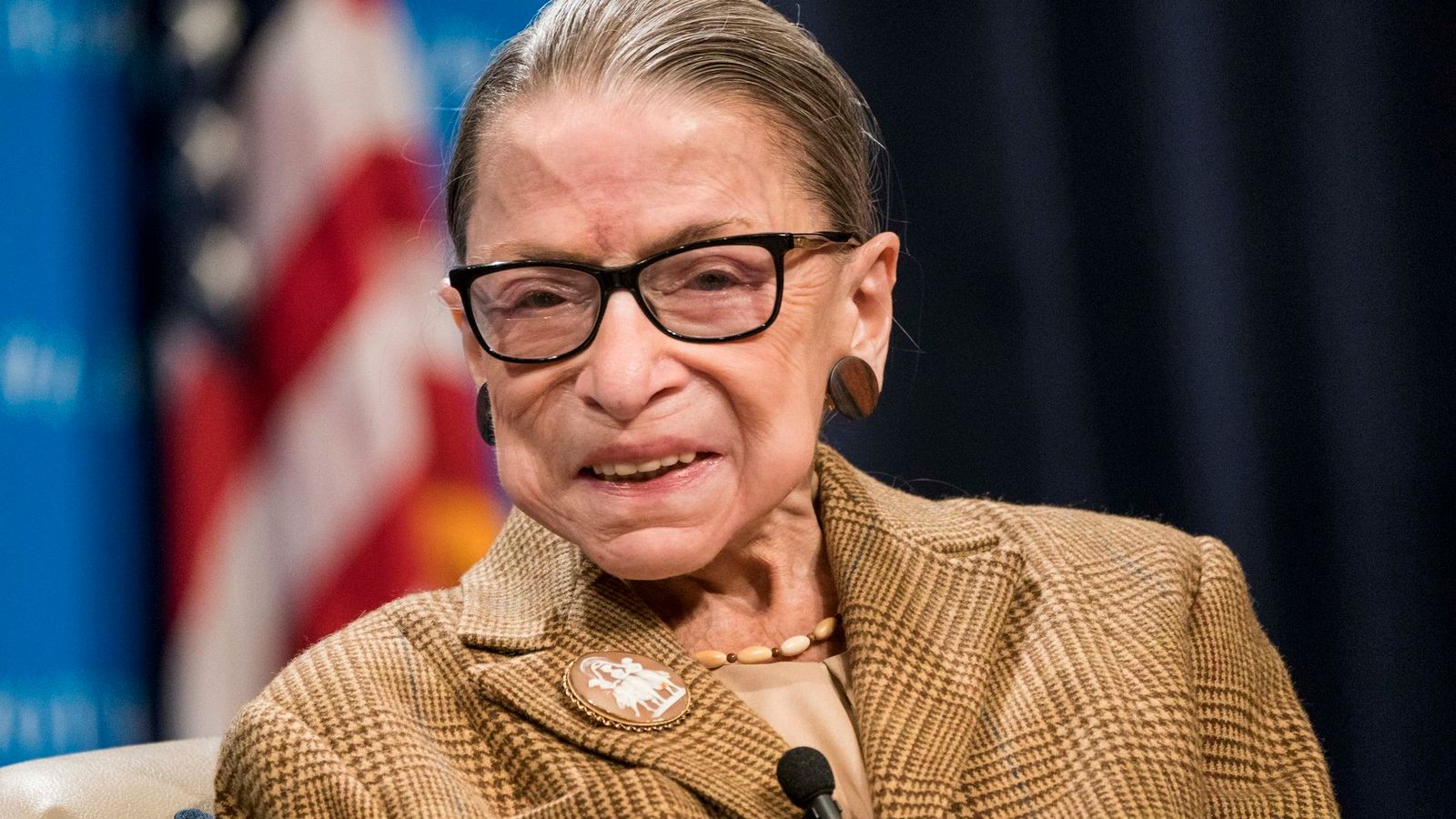
Ruth Bader Ginsburg, often called the "Notorious RBG," was a pioneering jurist who reshaped the American legal landscape. Born on March 15, 1933, in Brooklyn, New York, she faced numerous challenges but remained steadfast in her pursuit of justice. Her journey from a young girl in Brooklyn to a Supreme Court Justice is a story of resilience and determination. Ginsburg's work with the ACLU and her tenure on the Supreme Court left an indelible mark on gender equality and civil rights. Beyond her legal achievements, she became a cultural icon, inspiring generations with her unwavering commitment to justice and equality.
Key Takeaways:
- Ruth Bader Ginsburg's early life was filled with challenges, but she persevered through tragedy and excelled in school, paving the way for her future as a legal icon.
- Ruth Bader Ginsburg's legacy extends beyond her legal achievements, inspiring generations with her resilience and dedication to justice, leaving an indelible mark on the legal landscape of the United States.
Early Life and Education
Ruth Bader Ginsburg's journey began in Brooklyn, New York, where she was born into a family that valued education and resilience.
- Ruth Joan Bader was born on March 15, 1933, in Brooklyn, New York, to Nathan and Celia Bader.
- Her mother, Celia, was born in the United States to immigrant parents from Austria, while her father, Nathan, immigrated from Russia at age 13.
- The Baders were an observant Jewish family, instilling strong cultural and religious values in Ruth.
- Ruth's elder sister, Marilyn, died of meningitis at six when Ruth was just 14 months old.
- To avoid confusion with another Joan in her class, her parents decided to call her "Ruth" instead of "Joan" when she started school.
- Ruth excelled in school, participating in activities like baton twirling and playing the cello, and was a member of the honor society.
- Her mother, Celia, played a significant role in her love for learning, taking Ruth on frequent trips to the library.
- Tragically, her mother passed away from cervical cancer the day before Ruth's high school graduation.
- Although Ruth missed her high school graduation ceremony, she continued to honor her mother's memory through hard work and academic excellence.
- Ruth entered Cornell University on a full scholarship, where she met her future husband, Martin (“Marty”) Ginsburg.
Law School and Early Career
Ruth's path to becoming a legal icon was paved with challenges and triumphs during her law school years and early career.
- At Cornell, Ruth was influenced by professors Vladimir Nabokov and Robert Cushman, who shaped her thinking about writing and law.
- Martin and Ruth married in June 1954, nine days after she graduated from Cornell.
- They spent two years in Oklahoma while Martin was stationed in the U.S. Army, during which their daughter, Jane, was born.
- The Ginsburgs then moved to Massachusetts, where Martin resumed his studies at Harvard Law School, and Ruth began her law studies.
- Despite Martin's battle with cancer, Ruth excelled at Harvard Law School, supporting her husband's education while caring for their daughter.
- Ruth later transferred to Columbia Law School, graduating tied for first place in her class.
- Serving on both the Harvard and Columbia law reviews was an unprecedented achievement for any law student, male or female.
- After law school, Ginsburg embarked on a teaching career at Rutgers University Law School.
- She worked on legal projects, including studying the Swedish legal system, and navigated challenges such as hiding her pregnancy to avoid workplace discrimination.
- In the 1970s, Ginsburg became the director of the Women's Rights Project at the American Civil Liberties Union (ACLU).
Supreme Court Advocacy
Ruth Bader Ginsburg's work with the ACLU and her Supreme Court advocacy laid the groundwork for her future judicial career.
- During the 1970s, Ginsburg argued six cases before the Supreme Court, winning all but one.
- Her signature approach to combatting sexism was bringing lawsuits on behalf of men who were being treated unequally because of their sex.
- In Duren v. Missouri, Ginsburg argued and won on behalf of a male convict who felt his right to a jury chosen from a fair cross-section of his community was violated because it didn’t include women.
- Ginsburg's secretary, Milicent Tryon, suggested using the word "gender" instead of "sex" in her briefs to avoid negative associations.
- In 1980, President Jimmy Carter appointed Ginsburg to the U.S. Court of Appeals for the DC Circuit.
- She earned a reputation for her consensus-building skills and well-reasoned arguments through numerous written opinions.
- In 1993, President Bill Clinton nominated Ginsburg to the Supreme Court, making her the second female justice in its history.
- Ginsburg became the first female Jewish Supreme Court justice and the first Jewish justice since 1969.
- She served on the Supreme Court from 1993 until her death in 2020, a tenure marked by significant rulings on constitutional law.
- Ginsburg argued and participated in numerous landmark cases, including Moritz v. Commissioner of Internal Revenue.
Landmark Cases and Legal Impact
Ruth Bader Ginsburg's tenure on the Supreme Court was marked by her involvement in several landmark cases that shaped American law.
- In Gonzales v. Carhart, Ginsburg decried the federal Partial-Birth Abortion Ban Act on a 5–4 vote.
- In the Affordable Care Act cases, Ginsburg criticized her five conservative colleagues for concluding that the commerce clause did not empower Congress to require most Americans to obtain health insurance or pay a fine.
- Ginsburg's dissent in Ledbetter v. Goodyear Tire was vindicated when Congress passed the Lilly Ledbetter Fair Pay Act of 2009.
- One of the most significant cases she argued was United States v. Virginia, which challenged the male-only admissions policy at the Virginia Military Institute.
- In Ledbetter v. Goodyear Tire, Ginsburg criticized the majority’s holding that a woman could not bring a federal civil suit against her employer for having paid her less than it had paid men.
- In the Affordable Care Act cases, Ginsburg argued that the commerce clause empowered Congress to require most Americans to obtain health insurance or pay a fine.
- In Gonzales v. Carhart, Ginsburg argued that the federal Partial-Birth Abortion Ban Act was an effort to chip away at the right of women to choose to have an abortion.
- Ginsburg's dissents often articulated liberal perspectives and provided a counterpoint to conservative opinions.
- Her ability to find common ground helped her navigate complex legal issues.
- Ginsburg's advocacy played a crucial role in advancing women’s rights in the United States.
Personal Life and Legacy
Beyond her legal career, Ruth Bader Ginsburg's personal life and interests added depth to her legacy.
- Apart from her legal career, Ginsburg enjoyed hobbies like reading mysteries, watching classic movies, and indulging in opera.
- She even made appearances as an extra in opera productions, showcasing her diverse interests beyond the courtroom.
- Ginsburg was married to Martin Ginsburg from 1954 until his death in 2010.
- They had two children, Jane and James.
- Despite recurring cancer diagnoses, Ginsburg persevered in serving on the court.
- She died at her home in Washington, D.C., on September 18, 2020, at the age of 87.
- The announcement of her passing called forth an outpouring of public sentiment.
- A crowd of admirers gathered on the steps of the Supreme Court to pay tribute to a champion of equal justice under law.
- Ruth Bader Ginsburg's legacy extends far beyond her legal achievements.
- She inspired generations with her resilience and dedication to justice, leaving an indelible mark on the legal landscape of the United States.
Ruth Bader Ginsburg's Lasting Impact
Ruth Bader Ginsburg's life was a testament to resilience, dedication, and a relentless pursuit of justice. From her early days in Brooklyn to her tenure on the Supreme Court, she broke barriers and fought tirelessly for gender equality. Her strategic legal battles, especially those argued before the Supreme Court, laid the groundwork for many of the rights we take for granted today. Ginsburg's influence extended beyond the courtroom; she became a cultural icon, inspiring countless individuals with her unwavering commitment to justice. Her legacy lives on through the laws she helped shape and the lives she touched. Ruth Bader Ginsburg's story is a powerful reminder that one person's dedication can indeed change the world. Her contributions to the legal field and her role as a champion for equal rights will be remembered for generations to come.
Frequently Asked Questions
Was this page helpful?
Our commitment to delivering trustworthy and engaging content is at the heart of what we do. Each fact on our site is contributed by real users like you, bringing a wealth of diverse insights and information. To ensure the highest standards of accuracy and reliability, our dedicated editors meticulously review each submission. This process guarantees that the facts we share are not only fascinating but also credible. Trust in our commitment to quality and authenticity as you explore and learn with us.


